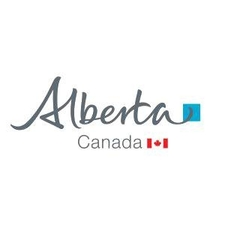Society
Type of resources
Available actions
Topics
Keywords
Contact for the resource
Provided by
Years
Formats
Representation types
Update frequencies
status
Service types
Scale
-

The “Businesses by Census Subdivision” is derived from the Statistics Canada’s Business Register. At the request of Agriculture and Agri-Food Canada, Statistics Canada aggregated the number of businesses per NAICS classification and employment class for each Census Subdivision. The data includes the individual occurrences of a business in each census subdivision by indicating its NAICS classification and employment class. The name, location, and any other identifying information about the businesses has been suppressed by Statistics Canada.
-

Vinsamlega hafið samband við Hagstofuna vegna nánari upplýsinga.
-

This the data for the Winnipeg AVPA Regulation's interactive web map. It contains two polygon datasets that help users determine whether a property is affected by requirements in the regulation and a point dataset to help users navigate to properties This is the data for the Winnipeg Airport Vicinity Protection Area Regulation's interactive web map. It was developed to help interested parties determine whether a property is affected by the Airport Vicinity Protection Area Regulation. To protect and foster the airport’s operations and continued growth, while ensuring orderly and efficient development within Winnipeg, the Province has adopted an Airport Vicinity Protection Area Regulation under The City of Winnipeg Charter. The regulation defines two protection areas called "Area 1" and "Area 2".These areas provide direction on where and what type of residential development may take place near the airport. Area 1 comprises of lands immediately adjacent to the airport, where no new residential development will be permitted, except for replacement of buildings and minor infilling. Area 2 is located further away from the airport, where new or replacement residential development may be constructed. All development within the regulated lands must comply with indoor noise level limits set out in the Regulation. The parcel boundaries in this interactive map are representations of parcels as defined by plan of subdivision or plan of survey registered at the Land Titles Office. This type of property boundary was chosen because the land division in these plans is used to define property ownership in Manitoba.
-

This the data for the Winnipeg AVPA Regulation's interactive web map. It contains two polygon datasets that help users determine whether a property is affected by requirements in the regulation and a point dataset to help users navigate to properties This is the data for the Winnipeg Airport Vicinity Protection Area Regulation's interactive web map. It was developed to help interested parties determine whether a property is affected by the Airport Vicinity Protection Area Regulation. To protect and foster the airport’s operations and continued growth, while ensuring orderly and efficient development within Winnipeg, the Province has adopted an Airport Vicinity Protection Area Regulation under The City of Winnipeg Charter. The regulation defines two protection areas called "Area 1" and "Area 2".These areas provide direction on where and what type of residential development may take place near the airport. Area 1 comprises of lands immediately adjacent to the airport, where no new residential development will be permitted, except for replacement of buildings and minor infilling. Area 2 is located further away from the airport, where new or replacement residential development may be constructed. All development within the regulated lands must comply with indoor noise level limits set out in the Regulation. The parcel boundaries in this interactive map are representations of parcels as defined by plan of subdivision or plan of survey registered at the Land Titles Office. This type of property boundary was chosen because the land division in these plans is used to define property ownership in Manitoba.
-

An interactive online atlas that shares culture, history, traditional knowledge and land use of the Gwich'in through place names.
-

Exploration Restricted Area was developed from reported flowing holes as per the Exploration Regulation (AR 214/98).
-

The Population of Canada, 10km Gridded national scale datasets display the distribution and areal extent of rural, urban and total populations across Canada for both 2011 and 2016. The 10km gridded framework is the same 10km gridded framework used within the Biomass Inventory Mapping and Analysis Tool. This data was created for AAFC by Statistics Canada using AAFC’s 10km gridded framework. The purpose of this data is to display the distribution of rural and urban populations across a 10km x 10km grid of Canada.
-

Boundaries of the National Capital Region since 1959, with the coming into force of the National Capital Act
-

Contact Information: Early Years Centres
-

Locations of scenic points already existing and potential in the Gatineau Park borders.
 Arctic SDI catalogue
Arctic SDI catalogue